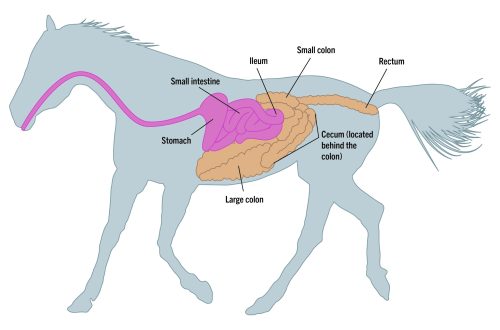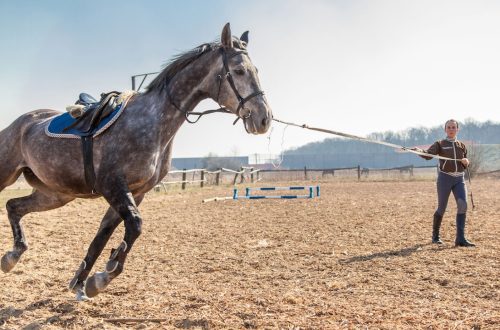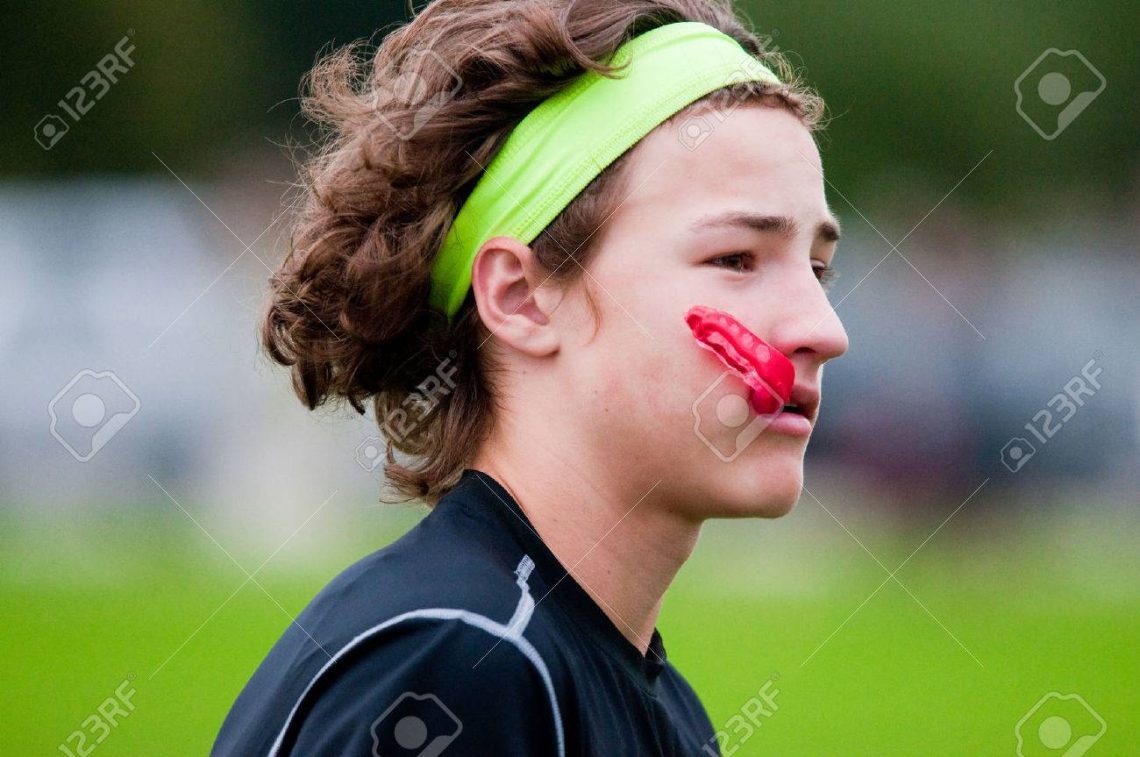
About headbands and mouthpieces
About headbands and mouthpieces
Starting talking about headbands, I can’t help but state the main principle of their work – no headband should be used to increase the impact of controls! This is not a power tool! I have often heard riders argue that “top horses have so much momentum that they cannot work on a simple snaffle.” At the same time, I was reminded of the lines from one English book about snaffles: “pells are strict iron, therefore, when using it, you need a lot of footwork.” Nothing was said about softer hands or aids, about a more well-trained horse – only about the braking effect of the pelam, which is opposed by a stronger leg! Impulse control with additional brake. Force on one side is opposed by force on the other. And then we demand relaxation from the horse …
A bridle can be used if your horse is moving in balance at all gaits, bending and transitioning in balance on a simple snaffle. She must hear the lightest signals of the rider. Until now, the snaffle has been used to teach the horse to bend and stretch on the reins to balance. How?
The horse is stretched on the outside rein.
The snaffle has a bit with an articulation. This allows the rider to move the bit from one or both sides at once, such as when it requires flexion.
When moving in a circle, the horse bends to the inside to match the trajectory of the circle. At the same time, we see not only “flexion of the inner side”, but also “stretching and lengthening of the outer side”. This is where the key phrase “on the reins”, moving forward and bending work. Flexing the inner side stretches the outer side (this can be thought of as a “longitudinal single side stretch”). When the horse learns to do this to both sides, he will be in the rider’s hand and be able to stretch both sides at the same time, stretch the topline and go to the snaffle. All this softening, the purpose of which is to stretch the topline, must be done on the snaffle. The rider must bend the horse, straighten it, remove the tightness on the bit, which can work one-sidedly.
When a horse works well on a snaffle, the usual bridle can be replaced with a bridle – the mouthpiece will take the place of the snaffle, while a small thin snaffle (bradun) is attached to an additional strap.
So, how does a mouthpiece work?
The mouthpiece is a lever action iron without articulations. The absence of joints is very important, otherwise the mouthpiece will not be considered a mouthpiece. The main difference between a mouthpiece and a snaffle is that the mouthpiece cannot be used unilaterally.
Mouthpiece function – lower the back of the horse’s head, make him give in the neck, bend the neck forward, down and out.
The jointless mouthpiece and levers on the sides provide a leverage effect. A cheek strap is attached to the upper end of the lever, and a rein to the lower end. A chin chain is attached to the upper ends of the levers – it fixes the mouthpiece relative to the lower jaw. The action of the rein causes the upper end of the lever to move forward, but since this movement is hindered by the cheek strap and chin chain, the bit puts pressure on the tongue and lower jaw.
The mouthpiece exerts an even pressure on the tongue, which can only be relieved if the horse’s jaw moves towards the rider’s hands. Since the neck has a certain length, it is easier to give in to pressure by relaxing the back of the head (so that the head drops to the vertical) or by opening the mouth. The opening of the mouth prevents the capsule. Relaxing the occiput causes the topline to stretch, the base of the neck to rise, and the neck itself to lengthen. The horse will do it if he is able. If she has already been trained in this snaffle work, it will be easy for her to do what the mouthpiece asks of her.
The mouthpiece is usually placed in the mouth in a manner that implies that the horse’s head is vertical or close to vertical. To keep the head in this condition, the horse must be well ridden and trained. By itself, a vertical head never made a well trained horse. Everything connected with this position of the head (an elongated neck and its raised base) should be performed more or less automatically. And perhaps this is only with a relaxed working back and the beginning of the collection.
So the mouthpiece adjusts the angle of the head, causing the jaw and poll to relax and the nose to drop, putting pressure on the poll and asking the horse to drop it (and head) and thus lengthen the neck and raise its base. Bradun is responsible for position, flexion, and lifting. Unlike the mouthpiece, it can work one-sidedly.
Rotating brush work.
But how to use the mouthpiece? First of all, it must be said about how not use how not to touch it when working with bradoon. It’s easy if you have good basic training: thumbs up, wrists flexible, knuckles pointing towards each other. In this position, the hands can be moved so that the fingers can turn inward and upward. At the same time, the point of entry into the rein brush of the bradoon moves, and the point of entry of the curb rein remains at the same distance from the horse’s mouth. This is how the bradoon works, but the mouthpiece does not.
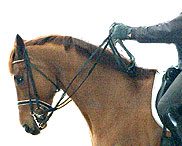
Mouthpiece lift – adding mouthpiece pressure.
You will not be able to make wide movements with your hands, working on the reins, which is why your horse must be trained enough to hear and respond to the rotation of the hand.
But, if you only need to use a bradoon, then why do you need a mouthpiece? Of course, you can use it if it doesn’t do its job automatically (the effect that stops the horse when he wants to stick his nose – the mouthpiece pushes further away from the rider’s hand and starts working by itself).
But the horse can tense up without sticking the nose out, and it will take pressure on the poll and tongue to loosen the poll and stretch the horse. How does the rider do it?
The best way to move the entry point of the lead rein into the hand is to lift the hand up. If you lift your hand up or even slightly forward, the rein of the bradoon will not shorten because your hand is moving in a circle around the ring of the bradoon in your mouth. But the lead rein creates downward pressure. The levers of the mouthpiece move, the mouthpiece acts on the horse.
An excellent illustration of what has been said – stripping reins 3+1. Today, few people work with two curb reins in their left hand. It’s a pity, because the work of the mouthpiece with such an analysis becomes very clear. The mouthpiece does not work unilaterally. Pulling on the left rein puts pressure on both sides of the lower jaw, unless of course you pull it hard, which will cause the horse to move his head sharply to the side …
Parsing the curb reins in the left hand gives the following:
1) the rider cannot move the left hand too far so that the whole arm is far from the center line of the horse (does not spread the arms wide) and
2) he cannot hide the fact that his horse is out of alignment by working the reins in such a way as to create different pressure on both sides of the mouth.
The bit reins are disassembled so that they are engaged when the horse raises his head and brings him to a position in front of the snaffle. When using a bradoon, turning the knuckles inward will have little effect on the bit reins that have been disassembled in this way. But wide arm movements, such as the “jerking” for example, cannot be performed without adversely affecting the horse. They block the head, back of the head and neck.
Parsing between fingers (two hands)
When the reins are separated, there are many ways to hold them. The most common (I don’t use it) is the bradoon rein under the little finger, and the mouthpiece rein is between the little finger and forefinger, where the snaffle rein usually lies. If you are used to feeling the horse’s mouth on your ring finger, you will continue to feel it on the bridle as well. You will ride a lead rein as if it were a snaffle rein, with the same contact and technique. This is not very good – you won’t be able to properly position, lift and bend the horse because now you will need to do these things with a bradoon, and the reins of the bradoon are located under the little finger:
The rein of the bradoon must not go over the mouthpiece, otherwise any inward turning of the fingers will affect the mouthpiece. But there is no need to keep the rein under the little finger:
When we hold the reins, a straight line from the elbow to the snaffle passes exactly through the ring finger. We can hold the lead rein between the index and ring fingers. It doesn’t matter that the index finger is not normally used to hold the reins, it won’t be a big mistake.

Phyllis analysis creates strong pressure through the mouthpiece rein – the horse breaks the neck in the second vertebra.
With such an analysis, the usual function of the iron is not preserved, since the curb rein does not enter the hand over the bradoon rein – it enters the hand under the little finger, and the bradoon rein enters the hand from above, like reins. The points of entry of both reins into the hand are as far apart as possible, and the slightest movement of the hand up/down has a strong effect on the horse’s mouth. This creates an almost “corrective contact” because the mouthpiece can be used without a bradoon. It no longer works automatically, as in the analysis of 3 + 1. The horse is often broken in the second vertebra.

Unfortunately, this analysis is becoming popular. So, Philip Carl uses it, but he is an outstanding rider with a great posture. He does not bend the horse with manic perseverance and effort …
I do not use this analysis: either the horse is ready for a bridle (in which case 3 + 1 or 2 + 2 will do), or not, and I choose a snaffle.
Mouthpiece types
There are many types of mouthpieces with different lever lengths, bit shapes, etc.
All mouthpieces have a non-articulated mouthpiece, and the length of the levers in competition is regulated by the rules.
Lever length

The greatest differences in effect depend on the length of the levers and the shape of the bit. Most riders claim that the longer the lever, the sharper the impact. But I would say that the longer the lever, the stronger the impact, and the shorter the lever, the sharper the impact.
Imagine that you have about 60 cm levers. To get them to turn the snaffle around the axis (nibble), say, 22,5֯, you need to shorten the reins, perhaps by 25cm! If the levers are only 10 cm, then you need to shorten the rein by 2,5 cm to get the same effect. Thus, a similar movement of the hands in the first case will not have as direct an effect on the iron in the mouth as in the second, and it can be said that a shorter lever has a more abrupt effect (a small movement of the hands has a direct effect). But long levers have a much stronger effect when the reins are moved 25 cm. You can even break the horse’s jaw. Longer levers have stronger action. But consider the length of the top of the arm. If there is no upper part, the mouthpiece will be practically useless. The chin chain will need to be pulled forward with something in order for the gnaw to act on the tongue and toothless edge of the mouth. If there were no chin chain, the upper part of the lever would move forward to a horizontal position (until the lower lever would be in a horizontal position and the leverage effect would have ended), a pressure similar to that of a snaffle would be applied to the toothless edge of the mouth. The top of the lever pulls the cheek strap forward and down. And, since he is not inferior, the gnaw will be pulled up. Pointless impact on a dressage horse.
Thus, a very short upper part reduces the effect created by the lower part of the lever. Ideal proportions – when the lower part is approximately twice as large as the upper.
Mouth shape
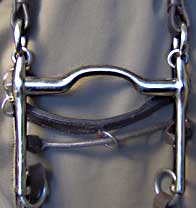
Grizzly Globus Sport.
The effect of the levers depends on the operation of the controls. The rider is passive – the levers are passive. But the bite, which lies on the tongue and the toothless edge of the mouth and is more or less in contact with the palate, has a direct effect on the horse. Even just having the bite in the mouth makes the horse feel it. Some horses are neutral to a foreign object on their tongue but don’t like it when something comes into contact with the edentulous edge of the mouth, others are sensitive to pressure on the tongue but find pressure on the edentulous edge normal. Some people like a thick mouthpiece that has a smoother shape but is heavy in weight, some prefer thin mouthpieces and tolerate their inherent severity.
A number of mouthpieces (like my favorite, which I believe most horses prefer) have a wide mouthpiece with a shallow arch that follows the contours of the tongue. Their peculiarity is that the mouthpiece is adapted to the shape of the tongue (the tongues of horses are flat and wide, while most mouthpieces have high and narrow arches).
Extremely high arch.
Narrow arch.
The arch, popular in the 1980s and 90s,
 does not correspond to the shape of the tongue, but stands on it, resting against the horse’s palate. It does not put pressure on the tongue, does not lower the bit down so that it contacts the edentulous edge of the mouth, and takes up more space in the mouth. The free space in the mouth fills with saliva, which flows out and gives the impression of a wet mouth, although you would get the same effect if you filled your mouth with stones.
does not correspond to the shape of the tongue, but stands on it, resting against the horse’s palate. It does not put pressure on the tongue, does not lower the bit down so that it contacts the edentulous edge of the mouth, and takes up more space in the mouth. The free space in the mouth fills with saliva, which flows out and gives the impression of a wet mouth, although you would get the same effect if you filled your mouth with stones.
A horse that has nothing in its mouth rarely opens it to let air in (unless it is eating and neighing). When a horse closes its mouth, the tongue fills the space between the rows of teeth and the palate, and nothing changes in this mechanism when a gnaw enters the mouth. The tongue will press the gnaw against the palate, although not very strongly. So, either the mouth will be in contact with the sky, or the horse will run with its mouth open. Therefore, it is the mouth that matches the shape of the tongue that will be on the wish list of any horse, because they create a minimum of free, air-filled space in the mouth.
The location of the bite in the mouth.
A narrow arch injures the tongue. To think that the tongue will somehow fit into it so that the bite can interact with the toothless edge of the mouth is absurd. The tongue is thick and wide, and so that the arch does not compress the tongue and the edges of the gnaw touch the jaw, the arch should be almost round. Such mouthpieces exist. For example, Segundo, but I would not buy it for obvious reasons:
I think the idea for this mouthpiece came from a rider who wanted to master the mechanical principle of operation and wanted the lever to work with the jaw bone. In the vast majority of cases, the lever does not interact with the jaw bones – only with the palate. The mouthpiece works on the tongue.
Spanish and Western riding mouthpieces have even taller and narrower, “cathedral” arches, sometimes with pointed ends, rollers, etc. They put pressure on the palate quite far in the mouth. Such a bit can cause tissue injury if used in modern dressage where the rider pulls back on the reins. Such mouthpieces are acceptable in Spanish and Western riding where the riders do not pull on the reins at all.
And here is the self-regulating iron. It is made in such a way that the pressure on the sky is created by the weight of the levers. I made two pictures: above we see the position of the mouthpiece when the horse’s head is vertical, below – in front of the vertical.
This is a serious thing. Of course, riders use such iron, and it works. But think about the risks! Imagine that your horse is not as well ridden as you thought. Something frightens her, and she abruptly raises her head to a position in front of the snaffle. Yes, you are holding the reins, perhaps in loose contact, but in any case, if the horse cocks its head, the reins will tighten and the arch will thrust sharply into the sky. But what if the reason to cling to something, and the horse starts to panic? What will you tell the veterinarian if the arch pierces the nasal cavity and gets stuck there?
I always make the weak link in the chin chain when I work with the mouthpiece.
No, I don’t use cathedral arch mouthpieces. But I like security. I am replacing one link in the chain with an old key fob ring. This design is suitable to be used as a link in a chain. If an accident occurs, this ring will spin before the mouthpiece breaks the horse’s jaw!
Mouthpiece Sprenger with interchangeable bits.
Mouthpiece designers have tried several times to solve the “mouth contour” problem. Since no two horses are the same, you need to try and find what suits yours. Some more expensive mouthpieces come with interchangeable mouthpieces. If you can afford it, this could be a great solution. The only drawback is that the bolt and nut visible from the outside do not look very aesthetically pleasing.
Mouthpiece Mullen.
This mouthpiece does not have an arch – just a curved mouthpiece in the shape of an arc. Such a mouthpiece is often found on older pelams and harness irons, as well as on the French headband mouthpiece. The design is simple but does not take into account the shape of the tongue.
Old type mouthpiece bit.
If you look at old mouthpieces, you will find that they have bits that don’t have a specific name. There is a shallow arch for the tongue, the part of the gnaw above the tongue is thinner. It looks like an arch, which is made by removing part of the gnaw. To do this, it is necessary that the bite be very thick (it is, accordingly, heavier).

Mouthpiece Sprenger “Lower Parts”.
Here the arch is shaped like a tongue and tilted forward. The mouthpiece has been designed to improve collection and delivery at the back of the head, jaw and neck. However, it should be softer, so that it can be used when familiarizing a young horse with a bridle.
I have not used this mouthpiece in my work. Yes, a forward-leaning arch can cause a submissive effect by pressing on the palate or tongue, but its softness seems to be deceptive in the photo.
moving parts
Rotating mouthpiece levers
Rotating and pivoting mouthpiece levers have become popular these days. They can be rotated or rotated relative to the bit. Some people say that there is no difference between this iron and regular mouthpieces. But it exists.
These mouthpieces have a mouthpiece designed to fit the mouth, tongue, and edentulous portion, especially when properly positioned in the mouth. Therefore, if the levers can be rotated independently of the bit, like the hands on a watch, the bit can remain in the optimal position, but the levers will continue to influence the tongue and edentulous margin with the help of the chin chain and the bit.
With the help of rotating levers, with unequal work with the right and left reins, you can “saw” the chin with a chain.
One manufacturer writes: “This iron provides nape pressure, chain chin pressure, and edentulous edge pressure without compromising the tongue. Each side of the mouthpiece can work independently to gain control of the horse’s head position. Such a mouthpiece is very useful if the horse likes to tilt his head.” I tend to agree with the first suggestion. The mouthpiece cannot be used unilaterally, as the pressure on the chain is what basically makes it work. If you put pressure on one side of the chain, it will move to that side and spread the pressure.
Head tilt is not a problem with hardware, but with riding. A tilted head cannot be corrected by the mouthpiece because its mouthpiece action, whether double or single-sided, will always be aligned with the chin chain. If the rider pulls on the left rein, the left lever will go back. The upper part of the lever on the left side will move forward and pull the chin chain until it pulls the upper part of the lever on the right side and thus spread the pressure. But this mouthpiece can give the rider the ability to perform the sawing action with the chain: both levers move to the right and left, and so does the chain. But, is it worth buying such iron?
Swivel movement of levers
What does a swing arm do? The differences between this mouthpiece and the regular mouthpiece are that (1) it rattles, (2) when the reins are fully open, the top loop/cheekstrap attachment rotates and presses against the horse’s cheek, and (3) there is another opportunity to pinch the horse’s lips. On a regular mouthpiece, the ring at the bottom of the lever allows the rein to move towards the mouthpiece. Just because the levers are spinning doesn’t mean that the mouthpiece can suddenly be used for rein opening work like a simple snaffle – don’t be fooled!
Chin Chain Adjustment
The operation of the mouthpiece is closely related to how the chin chain is adjusted. It must be correctly installed and not have rough edges. You can use a leather or neoprene backing so that the chain does not injure the horse. The chain acts on the lower jaw and two narrow bone ridges.
Gel pads that soften pressure and prevent chafing.
Some riders use rubber or gel backing to make the chain less knotty, but this is not necessary. The chain does not injure itself – you will not be able to “saw through” it with a normal mouthpiece. If the horse has blisters or injuries, pain from using a bare chain, then there is probably something fundamentally wrong with your contact with the horse and his mouth is hardly better than outside.
Leather chain.
I have not seen anyone use leather chin chains and am not sure if they are allowed in FEI competitions. Although, why not? After all, the skin here is just a cover for the chain …
The purpose of the chin chain is to fix the mouthpiece at a certain height in the mouth, prevent it from moving during operation and provide the possibility of leverage on the chin and pressure of the bite on the tongue. It is attached to the upper parts of the levers, usually on the same rings to which the cheek strap is fastened. From there, the chain goes under the chin, behind the mouthpiece bit, but in front of the bradoon. The hooks hang from the top rings, they must point out and forward, otherwise they might catch on the bradoon, the reins, or something else.
If the chain is loose, the lever will rotate the bit until the bottom of the lever is turned back with the reins pulled. If the chain is really loose, the lever will point to the brush.
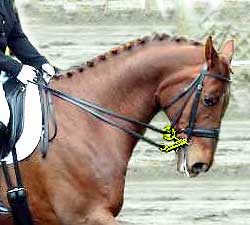
The mouthpiece collapses due to poor adjustment and excessive rein tension.
In this case, the mouthpiece has no leverage on the mouth. The bit works like a snaffle bit with no joints (straight bit), and the levers are just an extension of the rein. Such an adjustment does not harm, but there is no benefit from it either. Riders who fear that their horses will overreact often adjust their mouthpieces in this way.
If the rider adjusts the chain so that the bottom of the lever is parallel to the horse’s mouth when the reins are pulled, the opposite will happen. The angle of the lever to the bit at which the maximum effect is possible is 90 (this is approximately parallel to the horse’s mouth). In this position, the horse may try to bite the lower arm. In the worst case, the horse may even move its head so that the lower arm turns the other way. This can happen when show jumpers use a headband or headband without adapters. The best way to avoid this is to not use a headband for jumping and use adapters when riding a pelam.
Another option is to use an auxiliary strap:
Installing the Lip Strap.
Very few people use this old device. It is for him that small rings are provided in the middle of the levers of the mouthpiece. The accessory strap is attached to a small ring on one lever, passes through an additional ring (in the center) of the chin chain and is fastened to the other lever. This design prevents the levers from going too far forward. The strap does not need to be unfastened when removing the headband.

Angle of 45 degrees with respect to the mouth.
Let’s get back to the chain. Ideally, it should be adjusted so that the lower parts of the levers are at a 45-degree angle to the mouth when the reins are pulled (without hard pressure). As soon as their tension makes the chain work, the bite comes into action. The chain fixes the upper part of the lever relative to the lower jaw so that all actions applied to the lower part of the lever are translated into uniform pressure on the tongue (biter) and the lower jaw (chain).
So, when we see a horse with the levers pointing back towards the reins, does that mean the chain is not adjusted correctly? Usually not. The mouthpieces of many of these horses would look fine if the riders rode with the correct pressure and correct rein action. So what is it that causes the lever to pivot so far back? The answer is language.
Gryzlo presses the tongue and presses it down.
The tongue takes up more space in the mouth without a mouthpiece.
The passive mouthpiece causes the tongue to contract.
The active mouthpiece causes the tongue to contract even more.
If you look into a horse’s mouth, you will find that, contrary to the belief that the tongue is not a thin “ribbon” that comes out of the back of the mouth, but a thick muscle that comes out of the space between the lower rows of teeth, located quite far below. Only the tip of the tongue is thin – the part we see when the horse licks his lips, etc.
Under the leverage provided by tension on the reins, this muscle can be compressed to such an extent that, even with a normal chain setting, the levers will fall down and twist so that they look back at the rider’s hand. The tongue is soft and squeezable. But it’s also a muscle. It needs blood circulation, has nerves, and can experience pain. What is it like to work with an iron rod in your mouth that compresses your tongue and disrupts its circulation?
Rein pressure and mouthpiece

My friend offered me an interesting test. She put her foot into the mouthpiece, as if it were a horse’s jaw, and pulled on the reins. I also tried and realized: if I create such a contact, which I used to work on, then I begin to experience discomfort in the upper part of the foot after a couple of minutes. I lengthened the reins and tried again. Still need to be patient. But then I tried to make contact by pulling on the reins like a lot of riders do, and I realized why some riders have a hard time getting the horse to bridle. Pain! Sharp, inevitable pain. I admire horses that manage to get through this and start moving forward “from a small foot”.
Mouthpiece Width
Let’s talk about the size, which depends on the width of the bite. How wide is the mouthpiece for your horse? The problem with a bit that is too wide is that it will protrude from the sides of the horse’s mouth and the chain will probably not hold it well in the mouth, as it will not fit properly.
A much bigger problem arises when using mouthpieces that are too narrow. They press their lips to their teeth. The upper part of the levers should also not press on the horse’s muzzle, not press the skin into the bone.
Teresa Sandin (source); translation by Valeria Smirnova.



